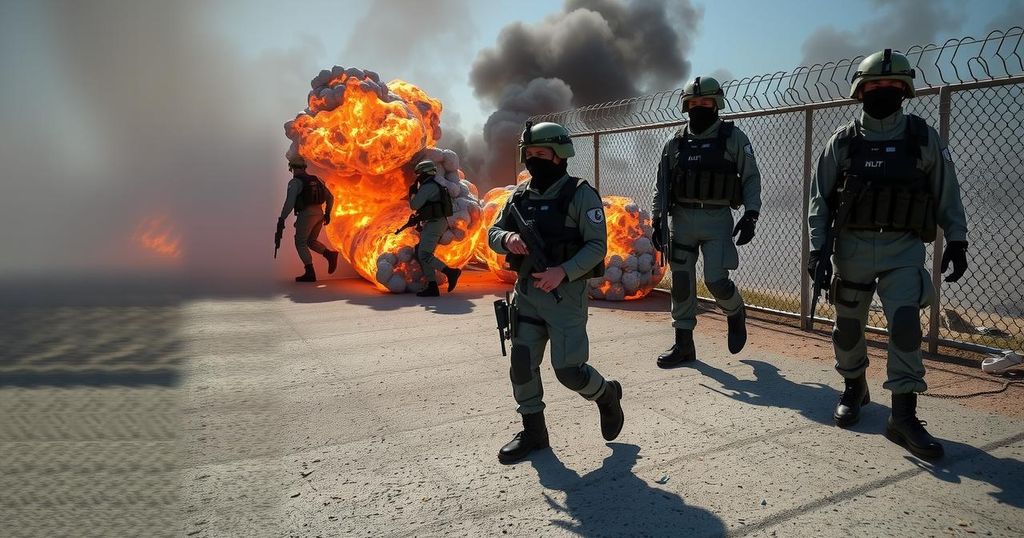World news
AL - ASSAD, AL QAEDA, ASIA, BASHA, BASHAR AL - ASSAD, CEASEFIRE, CIVILIAN CASUALTIES, CONFLICT, DAMASCUS, DEIR AL - ZOUR, GAZA, GAZA STRIP, GOLAN HEIGHTS, HAYAT TAHRIR AL - SHAM, HOMS, ISRAEL, JERUSALEM, JORDAN, LEBANON, MIDDLE EAST, MILITARY OPERATIONS, NORTH AMERICA, PHILIPPINES, RAJA ABDULRAHIM, RAJA ABDULRAHIM THOMAS FULLER, SYRIA, THE TIMES, UNITED NATIONS, UNITED STATES, WAR
Ethan Kim
0 Comments
Rebel Gains in Syria Prompt Border Closures Amid Rising Tensions
The advance of rebel forces in Syria has led to border closures by Lebanon and Jordan and military reinforcements by Israel. Rebels are moving southward towards Homs and closer to Damascus. The growing territorial claims pose a serious challenge to President Bashar al-Assad’s regime, while the Syrian civil war continues to evolve amid stagnant diplomatic efforts.
The advance of Syrian rebel forces has gained momentum, leading to heightened security measures among neighboring countries. Lebanon and Jordan have closed their border crossings, while Israel has bolstered its military presence in the Golan Heights. Rebels, primarily aiming to oust President Bashar al-Assad, have made significant inroads towards Homs, edging closer to the capital, Damascus, according to reports from both rebels and war monitors. Concurrently, a Kurdish-led group supported by the United States has established a presence in the formerly government-held eastern city of Deir al-Zour, further indicating the regime’s waning control. This combination of territorial gains by multiple factions marks a substantial challenge to President al-Assad’s authority. Despite the ongoing civil war being overshadowed by conflicts in other regions, diplomatic resolutions have remained stagnant for years. The coalition spearheading the offensive is led by Hayat Tahrir al-Sham, which, although once linked to Al Qaeda, has sought to redefine its image since splitting from the organization in 2016, despite still being classified as a terrorist entity by various international bodies.
The Syrian civil war, a complex and protracted conflict that has persisted since 2011, has recently exhibited shifts in the balance of power among various factions. The regime of Bashar al-Assad has faced increasing pressure as rebel groups progress southward, threatening critical urban centers. The war, which has often been sidelined by international focus on other regional conflicts, continues to evolve, with significant implications for both local stability and international relations. The dynamics of insurgent movements and their affiliations, particularly with groups such as Hayat Tahrir al-Sham, add layers of complexity to the situation, especially regarding international perspectives on terrorism and legitimacy.
The recent territorial gains by Syrian rebels signify a critical juncture in the ongoing civil conflict, prompting concerns among neighboring countries and resulting in border closures. The diminishing power of al-Assad’s government underlines the volatile nature of the war, which remains unresolved after years of stagnation in diplomatic efforts. The situation is further complicated by the presence of groups like Hayat Tahrir al-Sham, highlighting the challenges of achieving lasting peace and stability in the region.
Original Source: www.nytimes.com




Post Comment